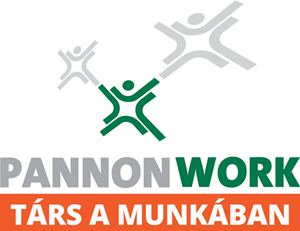Fókuszban a tűzoltás – Tűzoltók a frontvonalban ..
325
A cikk: 431 szó, 2 perc olvasási idő. A véleményed fontos számunkra! Mondd el a...
Életmód hírek
Külföldi hírek
Sport
Gazdaság
Fókuszban (közbiztonság, pénzügyi biztonság)

Neked
Fókuszban a tűzoltás – Tűzoltók a frontvonalban ..
325
A cikk: 431 szó, 2 perc olvasási idő. A véleményed fontos számunkra! Mondd el a...
A januártól életbe lépő változásokról szólt az idei utolsó Kormányinfó ..
641
A cikk hossza: 1199 szó, 6 perc olvasási idő. A véleményed fontos számunkra! Mondd el...
Fókuszban az egészségvédelem és az életmentés .. Mentők mindig szolgálatban – hírek ..
333
A cikk hossza: 242 szó, 1 perc olvasási idő. A véleményed fontos számunkra! Mondd el...
Fókuszban a közbiztonság .. Rendőreink újra életet mentettek .. Olvasóink nevében is köszönjük!
219
A cikk hossza: 164 szó, 1 perc olvasási idő. A véleményed fontos számunkra! Mondd el...
A szlovák köztársasági elnök aláírta azt a törvénymódosítást, amely büntethetővé teszi a Beneš-dekrétumok nyilvános bírálatát ..
238
A cikk hossza: 287 szó, 1 perc ilvasási idő. A véleményed fontos számunkra! Mondd el...
Karácsony, amikor a csend beszél helyettünk ..
262
A cikk hossza: 188 szó, 1 perc olvasási idő. A véleményed fontos számunkra! Mondd el...
Bosszú, dilettantizmus vagy jogos döntés? .. 6 óvoda bezárására készül az óbudai vezetés ..
243
A cikk hossza: 221 szó, 1 perc olvasási idő. A véleményed fontos számunkra! Mondd el...
Észrevétlenül a szakítás felé? – 10 intő jel, amit nem szabad figyelmen kívül hagyni (18+)
332
A cikk hossza: 532 szó, 3 perc olvasási idő. A véleményed fontos számunkra! Mondd el...
Dráma a levegőveben: Utasszállító gépek voltak halálos veszélyben Elon Musk felrobbant rakétája miatt (18+)
403
A cikk hossza: 413 szó, 2 perc ilvasási idő. A véleményed fontos számunkra! Mondd el...
Fókuszban a közbiztonság – eredményes elfogások szolgálják a lakosság biztonságát, rendőreink áldozatos munkáját olvasóink nevében is köszönjük!
402
A cikk: 329 szó, 2 perc olvasási idő. A véleményed fontos számunkra! Mondd el a...
Orbán Viktor miniszterelnők úr: „Tiszteletet kiváltó nagy nemzet vagyunk és ez legyen nyilvánvaló az egész világ számára”
921
A cikk: 399 szó, 2 perc olvasási idő. A véleményed fontos számunkra! Mondd el a...
Fogyelem! .. Három, a nyugdíjasokat érintő döntés jelent meg a Magyar Közlöny hétfői számában!
528
A cikk hossza: 308 szó, 2 perc olvasási idő. A véleményed fontos számunkra! Mondd el...
Miért tüntettek tegnap a fuvarozók a fővárosban?
368
A cikk hossza: 101 szó, 1 perc ilvasási idő. A véleményed fontos számunkra! Mondd el...
A NÉBIH hírei – Figyelem! .. Termékvisszahívás! .. Növényvédőszer-szennyezett S-BUDGET gyorsfagyasztott szamócát vontak ki a forgalomból, aki ilyet vett, vigye...
344
A cikk hossza: 250 szó, 1 perc olvasási idő. A véleményed fontos számunkra! Mondd el...
Jön fel a mentes és a boros-szilvás, de trónfosztás nincs – Nagy magyar szaloncukorkörkép
344
A cikk hossza: 334 szó, 2 perc olvasási idő. A véleményed fontos számunkra! Mondd el...
Hétfőre virradó éjjel az ukrábok dróncsapást mértek Oroszországban a Tamanynyeftyegaz (Tamanneftegaz) által üzemeltetett kőolaj- és gázterminál ellen a Krasznodari területen...
340
A cikk hossza: 311 szó, 2 perc olvasási idő. A véleményed fontos számunkra! Mondd el...
Kétezer kamion és teherautó is érkezik hétfőn Budapestre demonstrálni, megbénul a főváros, lista hogy hol lesznek ..
229
A cikk hossza: 373 szó, 2 perc olvasási idő. A véleményed fontos számunkra! Mondd el...
Vlagyimir Putyin háborús terveiről mindenki mást mond ..
722
A cikk hossza: 200 szó, 1 perc olvasási idő. A véleményed fontos számunkra! Mondd el...
Sallai Roland is a Premier League-be igazol? Őrült hír terjed a magyar játékosról Törökországban
239
A cikk hossza: 588 szó, 3 perc olvasási idő. A véleményed fontos számunkra! Mondd el...
Véget ért a poszt-hidegháború: Putyin kemény válasza Brüsszel háborúpárti álláspontjára (18+)
1476
A cikk hossza: 338 szó, 2 perc olvasási idő. A véleményed fontos számunkra! Mondd el...
Lengyel bosszú az oroszok ellen: MiG-29-es vadászgépek Ukrajnába (18+)
983
A cikk hossza: 815 szó, 4 perc olvasási idő. A véleményed fontos számunkra! Mondd el...
Megdöbbentő változások Karácsony előtt
487
A cikk hossza: 192 szó, 1 perc olvasási idő. A véleményed fontos számunkra! Mondd el...
Megérkezett Donald Trump amerikai elnök legújabb béke-ajánlata, megdöbbentő Zelenszkij és Európa reagálása ..
804
A cikk hossza: 120 szó, 1 perc ilvasási idő. A véleményed fontos számunkra! Mondd el...
Szoboszlai incidensétől hangos Anglia, egy bíró sem érti az ámokfutásnál történteket – videó (18+)
95
A cikk hossza: 486 szó, 3 perc olvasási idő. A véleményed fontos számunkra! Mondd el...
Fókuszban a közbiztonság – friss hírek a rendőrségtől ..
329
460 szó, 2 perc olvasási idő. A véleményed fontos számunkra! Mondd el a véleményedet Te...
Életveszélyes összetűzésbe torkollott egy illegális vadászat Nyírlugos határában, ahol orvvadászok nyitottak tüzet az erdőt ellenőrző szakemberekre – videó (18+)
445
A cikk hossza: 216 szó, 1 perc olvasási idő. A véleményed fontos számunkra! Mondd el...
Orbán Viktor nyolc legerősebb mondata a szegedi háborúellenes gyűlésről – videó
590
A cikk hossza: 524 szó, 3 perc olvasási idő. A véleményed fontos számunkra! Mondd el...
„Moszkva azt mondta nekünk: ha hozzányúlunk a pénzéhez, a következményeket örökké érezni fogjuk”
248
A cikk hossza: 2036 szó, 11 perc olvasási idő. A véleményed fontos számunkra! Mondd el...
Orbán Viktor: Európának nemcsak békére, hanem békességre van szüksége – képek, videók
538
A cikk hossza: 1814 szó, 10 perc olvasási idő. A véleményed fontos számunkra! Mondd el...
„Nézd meg a saját szemeddel! Tiszacsomag.hu” – új honlap indult, ahol megtudhatja, mit tervez a Tisza Párt
336
A cikk hossza: 385 szó, 2 perc olvasási idő. A véleményed fontos számunkra! Mondd el...
Rendőreink jó tanácsai a biztonságról – videó
321
A cikk hossza: 99 szó, 1 perc ilvasási idő. A véleményed fontos számunkra! Mondd el...
Merz terve megbukott, Brüsszel visszakozott – erről ír a világsajtó
420
A cikk hossza: 442 szó, 2 perc olvasási idő. A véleményed fontos számunkra! Mondd el...
Apokaliptikus rendetlenséget hagytak maguk után a céljaikat elérő tüntető gazdák Brüsszelben ..
185
A cikk hossza: 331 szó, 2 perc olvasási idő. A véleményed fontos számunkra! Mondd el...
Friss hírek a várpalotai horrorbaleset ügyében – ítélet és következmények – videó (18+)
657
A cikk hossza: 446 szó, 2 perc olvasási idő. A véleményed fontos számunkra! Mondd el...
Nehezen jött létre a megállapodás – 24 tagállam dobja össze a háborús kölcsönt
180
A cikk hossza: 426 szó, 2 perc olvasási idő. A véleményed fontos számunkra! Mondd el...
Figyelem! Eltűnt a 16 éves Orsós Beáta Júlia. Aki látta, vagy hollétéről információval tud szolgálni, hívja bármelyik rendőri számot, vagy...
262
A cikk hossza: 159 szó, 1 perc ilvasási idő. A véleményed fontos számunkra! Mondd el...
Figyelem! Eltűnt a 17 éves Farkas Alex. Aki látta, vagy hollétéről információval tud szolgálni, hívja bármelyik rendőri számot, vagy jelentkezzen...
346
A cikk hossza: 156 szó, 1 perc ilvasási idő. A véleményed fontos számunkra! Mondd el...
Figyelem! Eltűnt a 38 éves Gyetvai Ákos. Aki látta, vagy hollétéről információval tud szolgálni, hívja bármelyik rendőri számot, vagy jelentkezzen...
315
A cikk hossza: 166 szó, 1 perc olvasási idő. A véleményed fontos számunkra! Mondd el...
Izrael történelmi lépése: betiltották az állati szőrmék kereskedelmét – merre tart a világ? (18+)
314
A cikk hossza: 433 szó, 2 perc olvasási idő. A véleményed fontos számunkra! Mondd el...
Ünnepi asztal, nyugodt gyomor – emésztésbarát tippek karácsonyra
231
A cikk hossza: 405 szó, 2 perc olvasási idő. A véleményed fontos számunkra! Mondd el...
Filmek és könyvek, amelyek nélkül nincs karácsony – ünnepi ajánló szerte a világból
161
A cikk hossza: 458 szó, 2 perc olvasási idő. A véleményed fontos számunkra! Mondd el...
Vlagyimir Putyin évértékelője .. Putyin közeli és nem túl távoli tervei .. (18+)
4936
A cikk hossza: 1562 szó, 8 perc olvasási idő. A véleményed fontos számunkra! Mondd el...
Spanyol dobos készül országos turnéra egy 89 eurós Temu-pergődobbal
203
A cikk hossza: 348 szó, 2 perc olvasási idő. A véleményed fontos számunkra! Mondd el...
Így tűzijátékozhatnak az ünneplők szilveszterkor a fővárosban (18+)
158
A cikk hossza: 653 szó, 3 perc olvasási idő. A véleményed fontos számunkra! Mondd el...
Amikor a rajz belső iránytűvé válik ..
123
A cikk hossza: 236 szó, 1 perc olvasási idő. A véleményed fontos számunkra! Mondd el...
Orbán Viktor: siker, nem kap hadüzenetet Oroszország a vagyona felolvasztásával, a V3 pedig kimaradt a hadikölcsönből – videó
255
A cikk hossza: 457 szó, 2 perc olvasási idő. A véleményed fontos számunkra! Mondd el...
FIFA-gála: A PSG francia játékosa, Ousmane Dembélé lett az Év játékosa ..
204
A cikk hossza: 218 szó, 1 perc olvasási idő. A véleményed fontos számunkra! Mondd el...
A YouTube nyerte az Oscar-gála közvetítési jogát
183
A cikk hossza: 196 szó, 1 perc olvasási idő. A véleményed fontos számunkra! Mondd el...
Szőlő utcai botrány – folytatódnak a letartóztatások, közben a parlamentben határozatképtelenség (18+)
224
A cikk hossza: 856 szó, 5 perc olvasási idő. A véleményed fontos számunkra! Mondd el...
Szoboszlai Dominik reménykedik, hogy megkapja az engedélyt ..
196
A cikk hossza: 196 szó, 1 perc olvasási idő. A véleményed fontos számunkra! Mondd el...


